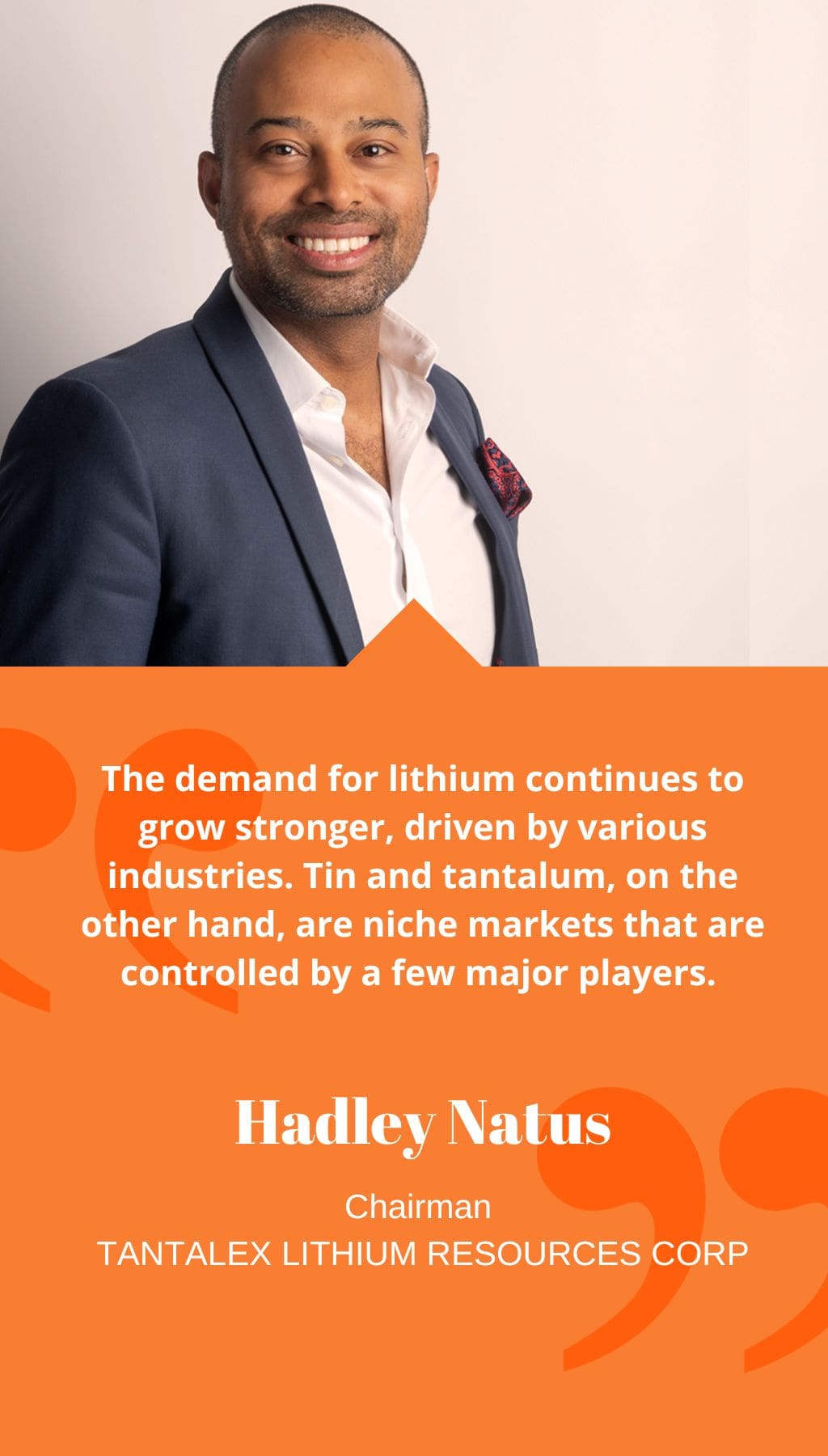
- DRC | 17 November 2022

Can you provide us with an overview of the Mineral Resource Estimate (MRE) at the Manono Lithium Tailings project?
Certainly. Our Maiden Resource Estimate reveals a Total combined Resource of 12.09 million tonnes with an average grade of 0.64% Li2O, with half of this in the Measured and Indicated category. This estimate is based on 13,000 meters of drilling, covering approximately half of the total volume of the historical mine’s dumps and tailings.
What are the next steps for the Manono Lithium project?
The resource estimate is highly valuable as it allows us to move forward with the first phase of the project, enabling us to enter production quickly. Our major advantage compared to other developers is our speed to market and low-cost mining. The resource is already on the surface, crushed, and ready for transportation to a process plant to produce 6% Li2 spodumene concentrate (SC6).
We have already initiated a Pre-economic Assessment, as well as Social and Environmental Impact Assessments. By the end of Q2 2023, we aim to complete our Feasibility Study on the initial plant, which is projected to produce 100,000 t/y of SC6 for a period of 6-8 years.
Additionally, we have planned an extensive drilling campaign on the hard rock Pegmatite Corridor southwest from our tailings project. We will also conduct further resource definition work on the tailings project with the objective of increasing our overall resources in lithium, tin, and tantalum.
Do you believe there is potential for more tailing valorization projects like Manono in Africa?
Absolutely. There is great potential for more projects like Manono in Africa. Manono was primarily a tin mine from 1910 to 1980, and at that time, lithium did not hold the economic value it does today. I believe there are additional tailings projects in Africa that can be revitalized by reviewing existing data and conducting further exploration and resource definition. Mining tailings not only offers a cleaner form of mining but also comes with lower costs, apart from rehabilitation expenses.
Can you update us on the latest developments at your greenfield exploration project, the Southwest Pegmatite Corridor, and the newly acquired alluvial Lubule tin & tantalum development project?
The Southwest Pegmatite Corridor is an exciting greenfield exploration project located southwest of AVZ’s 400 million-ton resource. This 25 km long and 5 km wide corridor shows significant potential for hard-rock lithium. We have conducted geochemical work and a 100 km2 high-resolution aeromagnetic survey. Currently, we are planning a drilling program of approximately 20,000 meters, combining Reverse Circulation and Diamond Drilling. The drilling program has already commenced, and we anticipate positive results by the end of Q2 2023.
As for the Lubule tin & tantalum development project, it presents an opportunity for us to achieve cash flow at low risk. We have invested around US$10 million in a plant, obtained the mining license, and are on track to commence operations by the end of this year. In early 2023, we expect to start commercial production and generate cash flow. Meanwhile, we are focused on securing firm offtake bids for our products.
Could you provide a summary of your financial strategy for the three projects in your portfolio?
To bring the Manono tailings project to the Pre-Feasibility stage, we estimate that we will need between US$15 to US$20 million. For the Southwest Pegmatite Corridor, we have already begun drilling, and with the raising of US$15 to US$20 million, we can fund subsequent drilling campaigns. Tantalex is currently trading on the Frankfurt Exchange (Ticker: DW8), the Canadian Securities Exchange (Ticker: TTX), and, since this year, the US-OTCQB (Ticker: TTLXF). The US-OTCQB listing will provide us with increased exposure to the American market, which has a strong interest in lithium among retail investors. Finally, once in production, the TiTan project is expected to generate annual revenues between US$20 to US$30 million, depending on tin prices.
How attractive are lithium, tin, and tantalum for investors in today’s environment?
The demand for lithium continues to grow stronger, driven by various industries. Tin and tantalum, on the other hand, are niche markets that are controlled by a few major players. Only around 2,000 tons of tantalum are produced annually, and there is no viable substitute for tantalum in electronics applications, making it a solid and expanding market. As for tin, it plays a crucial role in various industries and is particularly important in the context of the world’s shift toward electric vehicles, decarbonization, and increased reliance on electronic devices. With strong fundamentals and consistent future demand growth, we see these markets as highly attractive for investors in today’s environment.














